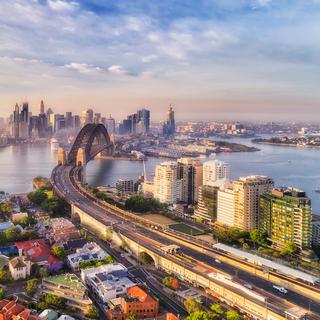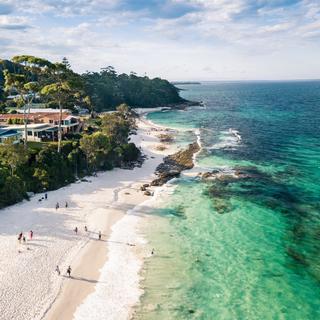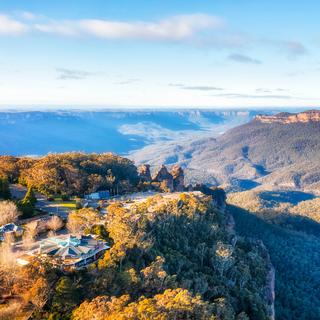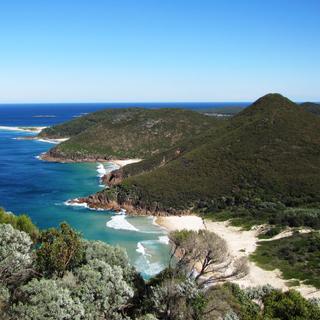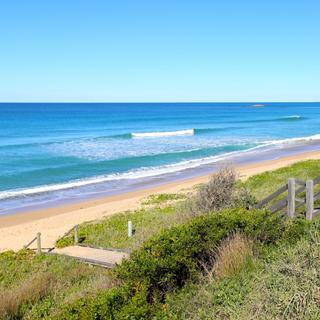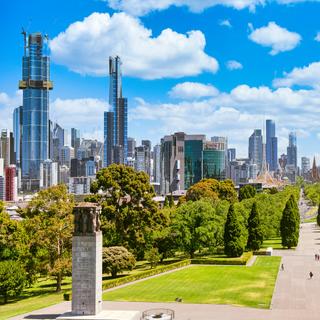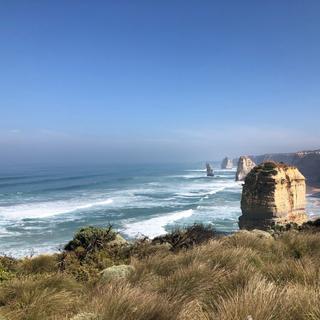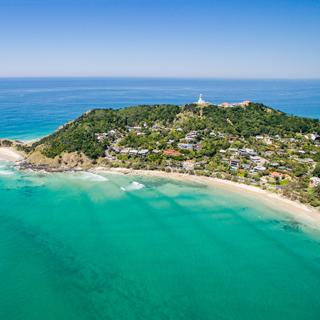Wollongong weather and climate in 2025
Day
26 °C
Night
18 °C
Sea
22 °C
Precipitation
98 mm
in month
Rainy days
11 days
in month
Daylight
14 hours
average
Sunshine
7 hours
average
Humidity
65 %
Weather charts for Wollongong
Find more destinations like this
Closest destinations for Wollongong
Closest cities for Wollongong
Weather overview for Wollongong
Weather overview
Wollongong's climate is typified by warm summers and mild winters, complete with ocean breezes that complement the coastal lifestyle. Averaging a comfortable high of 26 °C (80 °F) in January to a cooler high of 18 °C (64 °F) in July, Wollongong has inviting temperatures year-round. The wettest months stretch from February to April, with a peak rainfall amount of 148 mm (5.83 in) in February. Conversely, the driest month is August with an average of only 61 mm (2.40 in) of precipitation. Delectable sea temperatures range from warm 23 °C (73 °F) in February to a cool 17 °C (63 °F) in August, perfect for water enthusiasts.
January weather
A warm start to the year with average daytime temperatures of 26 °C (80 °F) and sea breezes blowing gently at 4 m/s. The evenings can cool off to about 18 °C (64 °F). Wollongong experiences occasional showers with about 11 days average wet days in January, inviting lush greenery.
February weather
February in Wollongong is when the rainfall hits its stride with an average of 148 mm (5.83 in). Daytime temperatures remain warm at about 26 °C (79 °F), while nights are a touch warmer at 18 °C (65 °F). The gentle sea breeze maintains a similar pace at 4 m/s.
March weather
March brings a slight dip in daytime temperatures to 25 °C (77 °F) with a persistent sea temperature of 23 °C (73 °F). The wind continues its gentle touch with an averaged speed of 4 m/s. Nighttimes begin to cool slightly, dropping to 16 °C (62 °F). With 11 days of rainfall expected, the weather is generally pleasant.
April weather
April sees a continuation of the wet season with 117 mm (4.61 in) of rain. The days cool down to an average of 23 °C (74 °F), and the winds remain gentle at 4 m/s. Night temperatures continue to decrease to around 14 °C (57 °F).
May weather
May brings a noticeable retreat from the wetter months with an average rainfall of 92 mm (3.64 in) and less wind activity, averaging 4 m/s. Temperatures during the day slightly decrease to 21 °C (70 °F), and nights get cooler with an average low of 11 °C (53 °F).
June weather
June's approach to winter is marked by a continued drop in daytime temperatures to an average of 18 °C (65 °F) and cooler sea temperatures of 19 °C (66 °F). The wind picks up a bit to 4 m/s, and night times are the coldest of the year at an average of 9 °C (48 °F). Rainfall remains above average with 100 mm (3.92 in).
July weather
July, the coolest month in Wollongong, sees daytime temperatures averaging a cool 18 °C (64 °F) and night temperatures dipping to a chilly 8 °C (46 °F). The wind remains steady at 4 m/s, and the dry season brings less rainfall with an average of 63 mm (2.47 in).
August weather
The dry season persists through August with the least rainfall of the year at 61 mm (2.40 in) and an increase in sun hours to 7 hours. Daytime highs begin to creep up to 19 °C (66 °F) while the wind maintains an average speed of 4 m/s.
September weather
Springtime bloom starts in September with daytime temperatures warming up to 21 °C (70 °F). As the dry season ends, wet days increase to about 7 days, and a gentle wind flows at 4 m/s. Modest rainfall amounts of 61 mm (2.40 in) mark a transition period.
October weather
October's weather in Wollongong becomes more varied with 89 mm (3.51 in) of precipitation and a bit more wind, at an average of 4 m/s. Daytime highs are comfortably warm at 23 °C (73 °F), and the sea temperature gets a notch warmer to 18 °C (65 °F).
November weather
The return of warmer days is felt in November with daytime temperatures averaging 23 °C (74 °F), and the nights remain mild at around 14 °C (58 °F). The wind persists at a gentle 4 m/s, and Wollongong begins to prepare for the summer rains, averaging 110 mm (4.32 in).
December weather
December in Wollongong brings an increase in both daytime temperatures to an average of 25 °C (78 °F) and rainy days with around 10 days. The sea breeze stays consistent at 4 m/s, and nighttime lows average a comfortable 16 °C (61 °F).
FAQs
What type of clothing is ideal for Wollongong in January?
Light and breathable clothing is best for Wollongong in January due to the warm daytime temperatures. However, a light jacket might be handy for the cooler evenings.
How often does it rain in Wollongong during February?
February sees the highest rainfall of the year, with an average of 11 days wet days, so expect frequent rain and pack accordingly.
Is a sweater necessary for Wollongong's evenings in March?
A sweater might be a cozy addition for the cooler evenings in March as nighttime temperatures average 16 °C (62 °F).
How does April's weather affect outdoor activities in Wollongong?
While April is still wet with an average of 9 days rainy days, the temperate climate with daytime temperatures averaging 23 °C (74 °F) is still conducive to a range of outdoor activities.
Can we expect many sunny days in Wollongong during May?
Sunny days become more frequent in May, with an increase in sun hours to 6 hours, indicating clearer skies and more opportunities to enjoy the outdoors.
What's the likelihood of rain in Wollongong during June?
The likelihood of rain in June is moderate with around 8 days wet days, so it's good to be prepared for some rainfall.
Is July too cold for a beach day in Wollongong?
Although July is cooler with average highs of 18 °C (64 °F), sunny days could still make for a pleasant beach outing, albeit with warmer attire.
What kind of weather can I expect in Wollongong during August?
August in Wollongong brings the driest weather with pleasant and slowly increasing daytime temperatures, which begins to hint at the upcoming spring.
How many hours of sunshine does Wollongong get in September?
Wollongong enjoys a hearty 7 hours of sunshine in September, indicating a good amount of clear, sunny days.
What's the sea temperature like in Wollongong in October?
Sea temperatures in Wollongong during October are on the rise, reaching an average of 18 °C (65 °F), becoming more conducive for swimming and surfing.
Are there a lot of rainy days in Wollongong during November?
Rainfall in November is higher with an average of 10 days wet days, but the rain is usually short-lived and not too disruptive to daily plans.
How does December's weather compare to the rest of the year in Wollongong?
December's weather is quite typical for Wollongong's summer season with warmer days and an uptick in precipitation, blending into the year-end holiday vibe.
We make the most from 40 years of historical weather data to predict the best weather conditions.
Deciding on where to go for a holiday is hard sometimes. Get inspired by the most popular destinations.
We aggregate data from combining multiple weather sources to ensure accuracy of the highest order.
